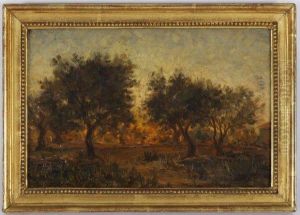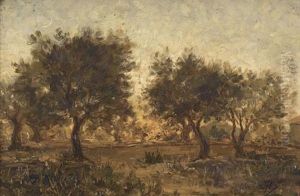Francisque Lemoine Paintings
François Lemoyne, also known as Francisque Lemoine, was a prominent French Rococo painter during the early 18th century. Born on September 4, 1688, in Paris, Lemoyne was the son of a sculptor and received his initial training from his father. He later studied under the painter Louis Galloche, who was the head of the Royal Academy of Painting and Sculpture at the time. Lemoyne's talent was recognized early on, and he won the prestigious Prix de Rome in 1711, which allowed him to study at the French Academy in Rome from 1713 to 1716.
Upon returning to Paris, Lemoyne quickly established himself as a successful painter, receiving commissions from some of the most influential figures of his time, including members of the French aristocracy and the royal family. His style was characterized by a refined elegance, a mastery of the classical form, and a soft, light touch that was typical of the Rococo movement. Lemoyne's work included mythological and allegorical subjects, religious works, portraits, and decorative pieces for private mansions and royal residences.
One of Lemoyne's most famous works is the ceiling painting 'The Apotheosis of Hercules,' which he completed for the Hercules Salon at the Palace of Versailles in 1736. This grand and complex composition is considered a masterpiece of French Rococo art and contributed to his appointment as First Painter to King Louis XV in 1736, succeeding his former teacher, Louis Galloche.
Despite his success, Lemoyne's life was marked by personal difficulties and a sense of dissatisfaction. He suffered from depression and financial problems, which were exacerbated by the pressures of his work and the high expectations placed upon him. Tragically, these issues culminated in Lemoyne taking his own life on June 4, 1737, at the age of 48. His death was a shock to the art community in France, and he was mourned as one of the most talented painters of his generation.
Lemoyne's influence extended beyond his lifetime, and his legacy can be seen in the works of his students, including Charles-Joseph Natoire and François Boucher, who would become leading artists of the Rococo style. Lemoyne’s contribution to French art was significant, and his works continue to be celebrated for their beauty, craftsmanship, and historical value.

